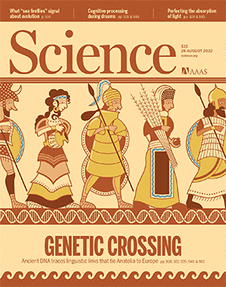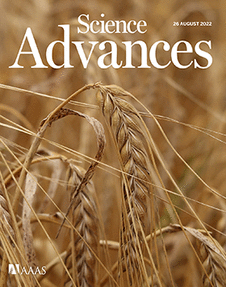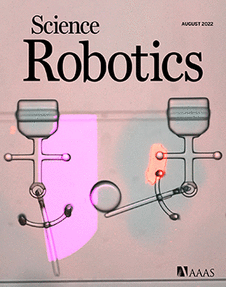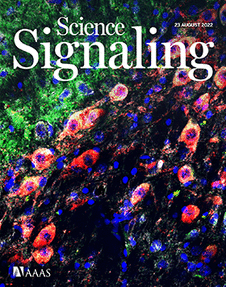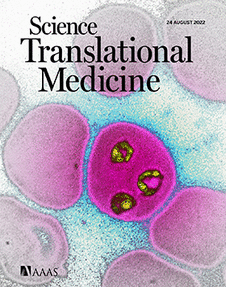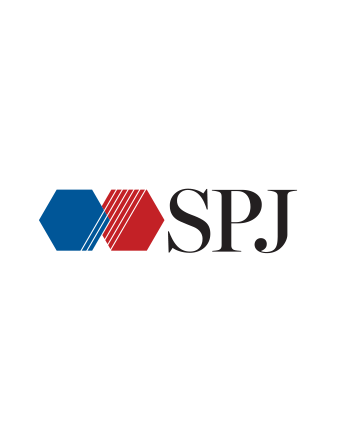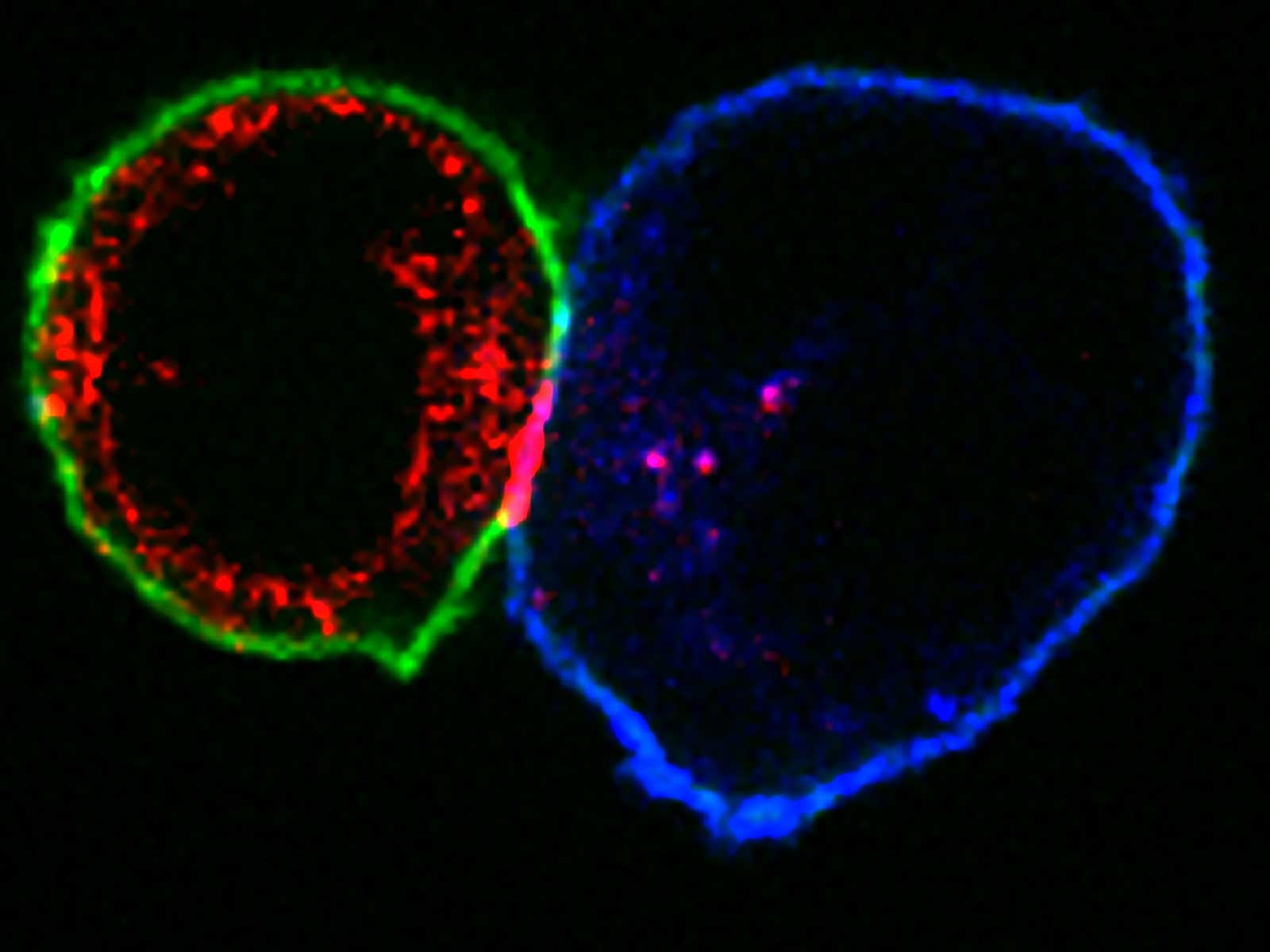
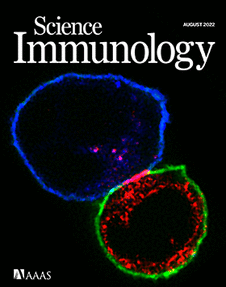
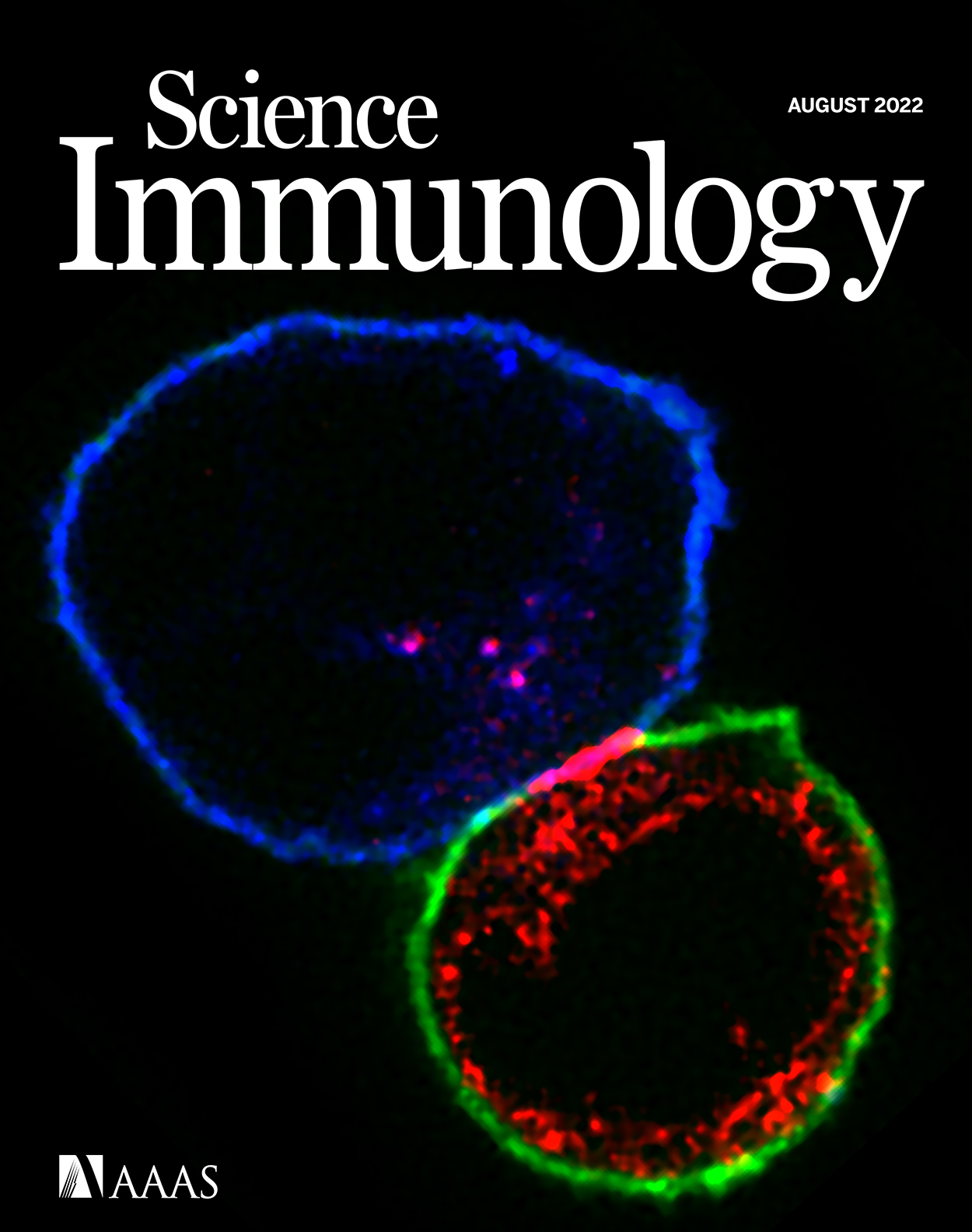
ONLINE COVER Exclusion of CD45 from a CAR-T Synapse. This month’s cover features a confocal microscopy image in which a human T cell expressing a CD19-targeting chimeric antigen receptor (CAR), stained in red, has formed an immunological synapse with a human Raji B cell lymphoma cell (blue). CD45 (green), a bulky tyrosine phosphatase enzyme that can inhibit CAR-T activation, is effectively excluded from the central portion of this synapse. Xiao et al. developed a size-exclusion model to explain how the relative sizes of the CAR construct and the CD45 isoform on a CAR-T cell and the target antigen on a tumor cell calibrate CD45’s dampening of antigen-triggered CAR-T activation at the synapse.
Credit: Xiaolei Su/Yale UniversityScience Immunology
- Volume 7|
- Issue 74|
- Aug 2022
ONLINE COVER Exclusion of CD45 from a CAR-T Synapse. This month’s cover features a confocal microscopy image in which a human T cell expressing a CD19-targeting chimeric antigen receptor (CAR), stained in red, has formed an immunological synapse with a human Raji B cell lymphoma cell (blue). CD45 (green), a bulky tyrosine phosphatase enzyme that can inhibit CAR-T activation, is effectively excluded from the central portion of this synapse. Xiao et al. developed a size-exclusion model to explain how the relative sizes of the CAR construct and the CD45 isoform on a CAR-T cell and the target antigen on a tumor cell calibrate CD45’s dampening of antigen-triggered CAR-T activation at the synapse.
Credit: Xiaolei Su/Yale University